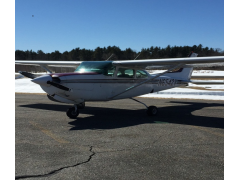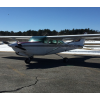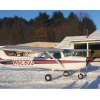How many times have you had to cancel your flight due to low ceilings or poor visibility? Have you ever had to delay a return trip because weather? Have you been frustrated because you know great flying weather exists just above a low overcast sky? These problems would be non-issues if you just had Instrument Rating.
With the skills you’ll develop in instrument training, you’ll be able to control your airplane and navigate all the way to your destination without outside visual references, solely by reference to the flight instruments. The Instrument rating will open up many more opportunities for you to fly without being grounded by weather. And in the process, you’ll become a more accurate and more proficient–and thus safer–pilot, even when the weather is VFR.
Prerequisites
To take the FAA Instrument Airplane rating (Part 61) practical test, you must:
Be able to read, write and speak the English language.
Complete the Computer-based Instruction course.
Pass the FAA knowledge test before taking the practical test.
Hold at least a Private Pilot certificate with Airplane rating.
Have at least 50 hours of pilot in command cross-country flight time.
Training Time Required
To add the Instrument Airplane rating to your pilot certificate, the FAA requires:
At least 40 hours of actual or simulated instrument flight time, and
At least 15 hours of dual instrument flight instruction (although 30-40 hours are typically needed for safety and competency), including: one dual IFR cross-country of at least 250 nm with different instrument approaches at each of three airports, and
3 hours of instrument flight in preparation for the FAA practical test.
Note that any actual or simulated instrument flight time that you have logged before beginning your Instrument rating training (such as the three hours of instrument flight time required for the Private Pilot certificate) will count toward these requirements.






